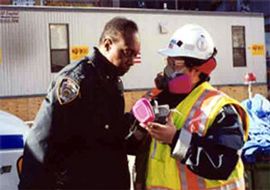Learn About the U.S. > Work and Workplaces in the U.S. > Employment > State’s Unique Worker’s Compensation Laws

|

Employment
- Social Security and Retirement
- Retirement Age and Social Security
- Working at Home
- Longer Years of Retirement
- Employment trends
- Foreign workers in the United States
- Mexican Workers in the United States
- Workplace Safety Standards
- Work-related Injuries and Deaths
- Growth of Large Corporate Farming
- Union Membership Across the United States
- Laws Regarding Working Women
- Labor Contracts in the United States
- Right-to-Work Laws
- Public worker unions in the United States
- Unemployment insurance
- Equal Opportunity Employment Laws
- Workers’ Compensation
- Minimum Age for Agricultural Employment
- Minors in the Workplace
- Minimum Wage
- Employment of Persons with Disabilities
- Major Equal Employment Legislation in the U.S.
- Employment in the Service Sector
- Unemployment
- State’s Unique Worker’s Compensation Laws
- Life on Unemployment
- Minimum Wage and Poverty
|

After the terrorists attacks of 9/11, OSHA workers attempted to make the site as safe as possible for workers.
Photo Courtesy of the United States Occupational Safety and Health Administration.
State’s Unique Worker’s Compensation Laws
In 1911 Wisconsin became the first state to pass a worker compensation law in which employers provided workers with insurance that covered injury or death in return for workers giving up their right to sue employers. This law, referred to as “The Great Trade Off” is considered the first true worker compensation law passed by any state. By 1948, all 48 states and Hawaii and Alaska had passed worker compensation laws. Currently, worker compensation is mandatory in all states except Texas and New Jersey. The Washington state worker compensation law provides a typical example of benefits for injured workers. “Benefits include (1) time loss payments during periods that the worker is medically disabled, (2) health care expenses, (3) vocational retraining benefits in the discretion of the Department if the worker is medically unable to return to his or her job at time of injury and doesn’t have readily transferable skills, (4) a permanent partial disability payment if there is a medically ratable impairment at the end of the claim, (5) if the worker is found to be permanently disabled, the worker may qualify for a total disability pension.”
|
|
|
| Download Podcast in
English
| Japanese
|
|
Document |
Audio-Video |
Chart |
Picture |
Map
|
|

